Introduction
Canon 5DS & 5DS R Measurement: Best Canon scores for Color Sensitivity and Dynamic Range
Achieving very similar overall DxOMark Sensor Scores of 87 points for the EOS 5DS and 86 points for the EOS 5DS R, these are the best results we’ve measured on a Canon sensor to date. An improvement of 5 points compared to the previous Canon champion, the EOS 1Dx with 82 points, represents a one-third stop of better image quality overall from Canon’s latest chip.
Leading the competition in most of our sensor score sub-categories, the 5DS offers the best results on an EOS sensor for Color Depth and Dynamic Range. For Low-light ISO, the lower-resolution 18Mp EOS 1Dx remains just ahead with its Sports score of 2786 ISO, compared to 2381 ISO for the EOS 5DS, which isn’t far behind. Despite this slight anomaly the EOS 5DS offers marginally better image quality over the top five EOS sensors in most categories. It’s interesting to note, however, that both the 5DS and 5DS R results for Color Sensitivity and Dynamic Range are notably improved in the printed results compared to those analyzed on screen (more on this in the comparison results).
Still to crash through the 90-point barrier for DxOMark sensor scores, however, the EOS 5DS and EOS 5DS R chart outside the DxOMark top 20, sitting in 21st place and 22nd place, respectively. That is well behind the latest Nikon and Sony full-frame sensors, such as the Nikon D810 with 97 points and Sony A7R with 95 points, and the Canon sensor remains about two-thirds of a stop off the pace despite its massive resolution. At face value, though, those headline scores can be a little misleading. We provide further analysis of the EOS 5DS and 5DS R in order to understand the strengths and weakness of this highest-resolution DSLR camera currently available.
Comparison 1: EOS 5DS vs EOS 5DS R
The low-pass cancellation filter employed on the EOS 5DS R version doesn’t have a significant impact on the DxOMark scores for the two models. The EOS 5DS is marginally ahead overall, scoring 87 points against 86 points for the EOS 5DS R, and offers a 0.1-bit improvement for Color Sensitivity, the same Dynamic Range, and a slightly improved ISO score. There’s very little in it, though, so it’s fair to say the two models essentially offer the same image quality. A low-pass filter on the sensor has historically been employed to negate the adverse effects of moiré (wavy colored lines) in areas of very fine detail. As has been seen recently with high-resolution DSLRs boasting 20-plus megapixels, however, these sensors offer enough resolution to record fine detail, so when shooting 50.6Mp stills on the EOS 5DS R, there shouldn’t, in theory, be an issue with moiré.
Our analysis of Measured ISO vs Manufacturer ISO on both models concludes that while the native ISO100 – 6400 range is accurate, the Expanded L: 50 ISO setting offers the same sensitivity as ISO100 when shooting RAW files.
With further analysis of the DxOMark sensor score sub-categories of Color Sensitivity, Dynamic Range, and Low-Light ISO, we again see both the 5DS and 5DS R sensors post identical results. So there’s nothing between them, which is true for both screen and print results, with both sensors posting better scores in the print analysis.
DxOMark aficionados will know that Noise levels become more of an issue with higher-resolution sensors and a smaller pixel pitch. Analysis of the 5DS SNR18% graph identifies greater levels of visible Noise on screen results, with the SNR dropping below 38dB even at ISO100. So the Noise looks bad on-screen, but in print it’s a different story, with well-controlled results up to ISO800; even at the highest sensitivity SNR 18%, ratios are still pretty good.
For Dynamic Range, again the best results are seen in print, with the EOS 5DS maintaining Dynamic Range over 10Ev up to ISO3200. In prints, even at the top sensitivity of ISO12800, Dynamic Range drops to only 8Ev. Things are worse again on-screen, however, where Dynamic Range drops below 10Ev from ISO800. It’s a similar pattern with Color Sensitivity results, too: for print results, the camera records excellent Color of over 20 bits up to ISO800, but with screen results, this drops below 20 bits by ISO200.
Comparison 2: EOS 5DS vs EOS 6D vs EOS 5D MkIII
Head to head against full frame Semi-Pro Canon DSLRs, such as the EOS 6D with 82 points and EOS 5D Mark III with 81 points, the EOS 5DS offers a one-third stop better image quality overall. For Dynamic Range, the EOS 5DS’s best result of 12.4Ev was achieved in print results at base ISO, compared to 12.1 Ev for the EOS 6D and 11.7Ev for the EOS 5D Mark III. That’s at base ISO, however, and as we’ve seen, the 5DS’s higher-resolution sensor can’t maintain this Dynamic Range advantage as sensitivity is increased. By ISO800, all three semi-pro EOS sensors display the same amount of Dynamic Range, and at higher sensitivities the 5DS starts to fall behind. In screen results for Dynamic Range, the EOS 5DS is actually behind both the EOS 6D at all ISO sensitivities, as well as behind the EOS 5D Mark III from ISO800 onwards. So the EOS 5DS’s advantage for Dynamic Range over the Canon semi-pro competition is only really evident between ISO100 to ISO400 in printed results.
There’s a similar pattern for the Color Sensitivity results, where the 5DS’s print results are stronger than the screen results. In prints at ISO100, the 5DS’s best Color Sensitivity score of 24.7 bits offers around one-half stop better color compared to the EOS 6D and the 5D Mark III. The gap narrows significantly by ISO400, however, and from ISO1600 all three EOS models offer the same color. It’s a different story for screen results, however, where color on the 5DS sensor is consistently behind both the EOS 6D and EOS 5D Mark III by a fraction. So again, while the 5DS does offer the best overall result for a Canon EOS sensor, its Color Sensitivity advantage is limited to print results at ISO100 and ISO200.
With very similar Sports scores of 2381 ISO for the 5DS, 2340 ISO for the 6D, and 2293 ISO for the 5D Mark III, the three sensors have similar levels of Noise.
Canon 5DS & 5DS R Comparison 3: EOS 5DS vs Nikon D810 vs Sony A7R
Sitting outside the top 20 in the rankings, the headline scores for the EOS 5DS suggest that it’s far behind the best sensors we’ve tested. The Nikon D810 and the Sony A7R, for example, both offer around two-thirds of a stop better image quality, with overall scores of 97 and 95 points, respectively, compared to 87 for the 5DS.
For Color Sensitivity, the D810 and the A7R are also two-thirds of a stop better than the 5DS at base ISO, with scores of 25.7/25.6 bits, respectively, compared to 24.7 for 5DS. For screen results, the Nikon/Sony advantage for color is maintained as sensitivity is increased, although the gap narrows marginally. For print results, however, the difference between the three sensors is much closer, with the EOS 5DS sensor only fractionally behind the Nikon/Sony competition.
For Dynamic Range, however, there’s a much bigger difference among the three sensors at base ISO, where the Nikon D810 and Sony A7R sensors are far ahead. Landscape scores of 14.8Ev for the D810, compared to 12.4Ev for the 5DS, put the Nikon over two stops ahead, and the A7R just under two stops ahead with 14.1Ev. Despite this wide gap at base ISO, however, the gap narrows significantly as sensitivity is increased and by ISO800, all three sensors offer the same Dynamic Range. So the D810 and the A7R have an advantage for Dynamic Range only between ISO50 and ISO400, but this two-stop advantage will be significant for photographers shooting at the lower ISO sensitivities.
Canon 5DS & 5DS R conclusion: Best Canon scores for Color Sensitivity and Dynamic Range
Boasting an unprecedented 50.6Mp resolution, the EOS 5DS and 5DS R offer a unique DSLR shooting solution. What’s more, our industry standard tests have shown these are the best sensor results yet for a Canon chip, with the 5DS cameras offering a small step up for image quality against other full-frame semi-pro models such as the EOS 6D and EOS 5D Mark III. Our measurements show that there’s very little difference between the 5DS and 5DS R sensors, but we’ve seen both models post better scores in print results compared to those on screen.
As usual, the best scores are recorded at each sensor’s base ISO setting, and here the 5DS sensors are a little off the pace against the best chips we’ve analyzed (in the Nikon D810 and the Sony A7R). This is particularly true for Dynamic Range, where the Nikon and Sony models boast around a two-stop advantage at base ISO, although the gaps narrows as sensitivity is increased.
With its massive resolution and best results in print, the EOS 5DS and 5DS R are great solutions for photographers shooting at low ISO sensitivities for large scale prints.


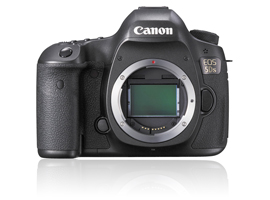


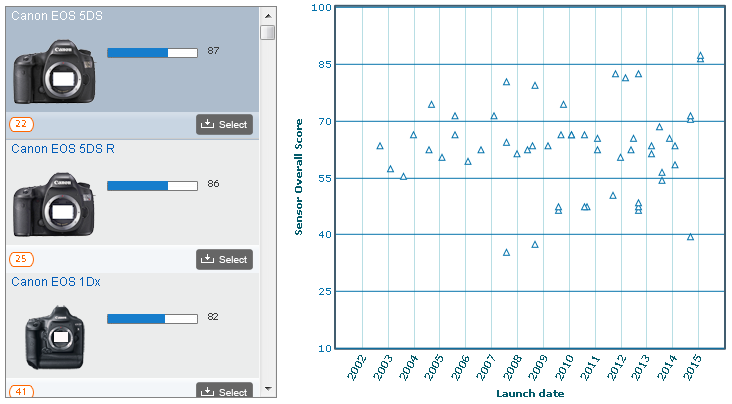
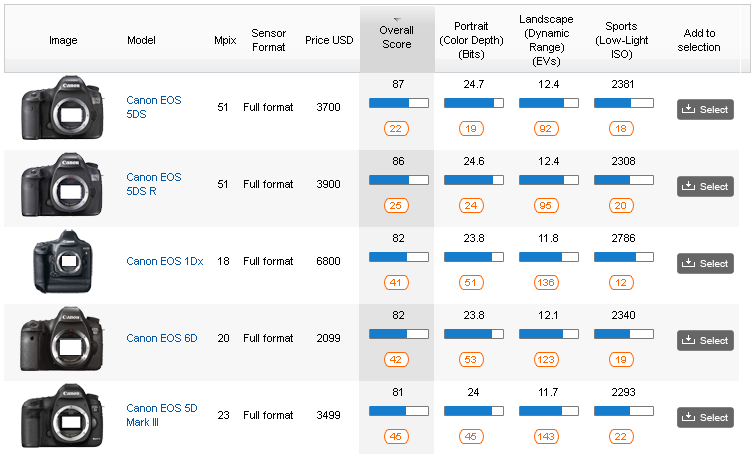
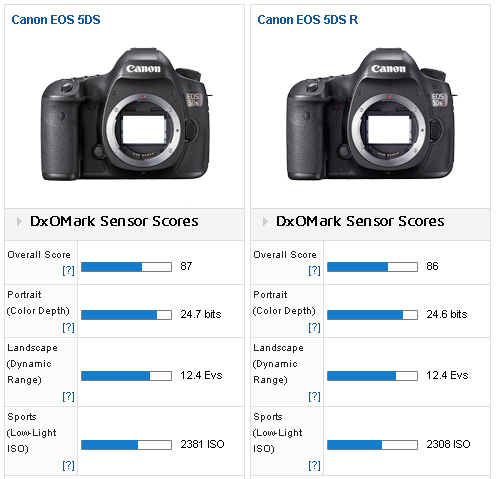
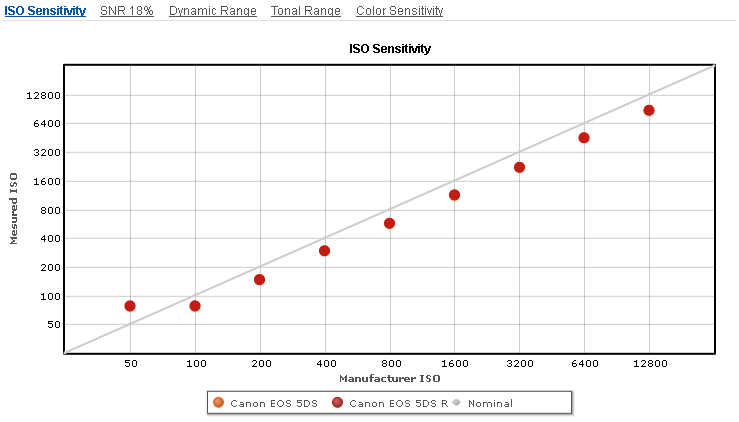
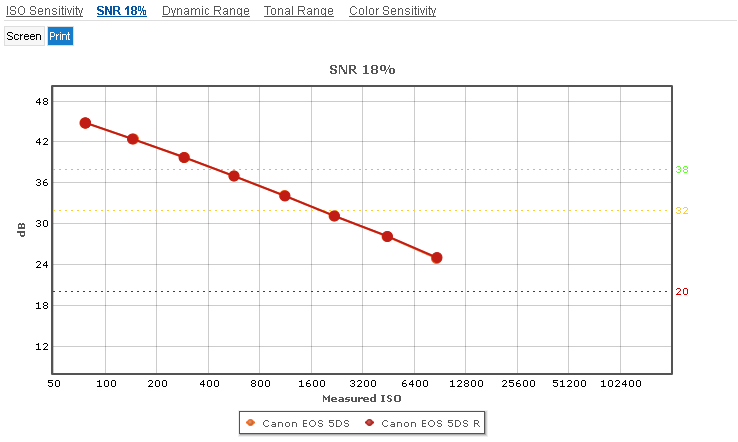
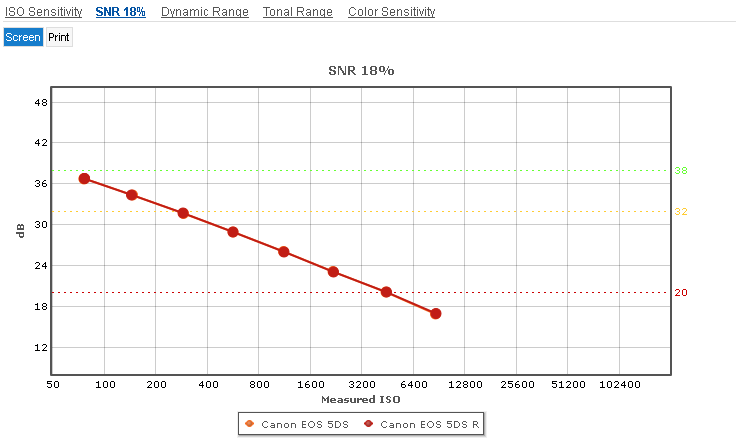
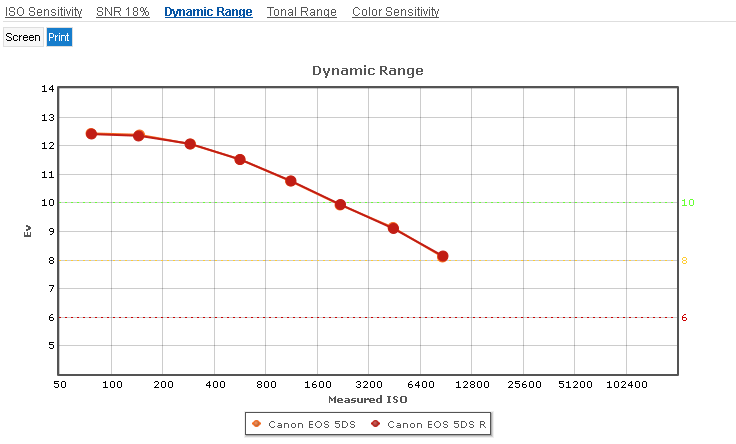
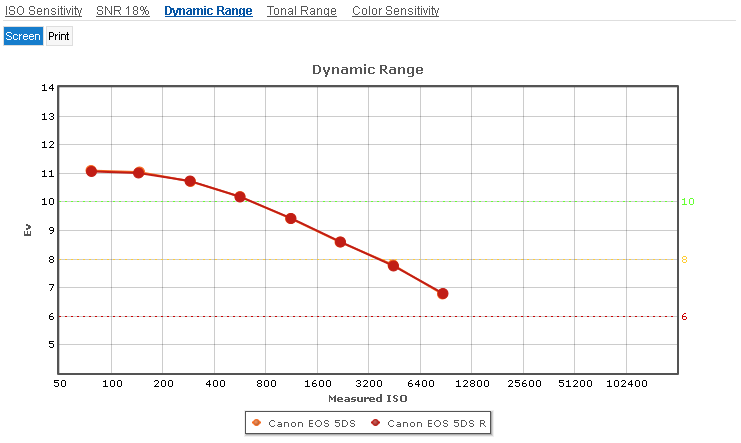
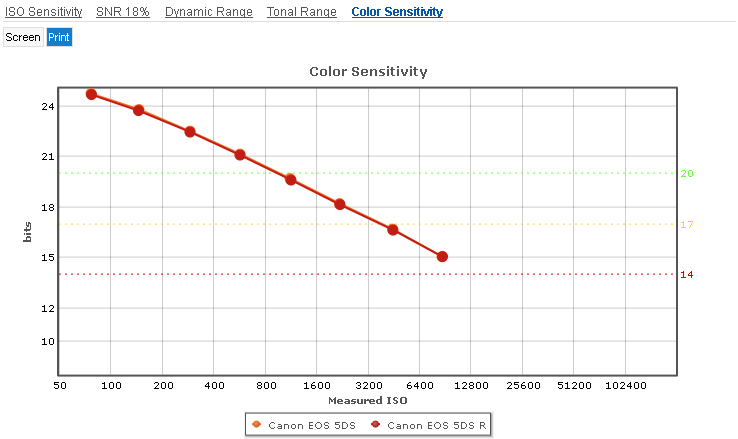
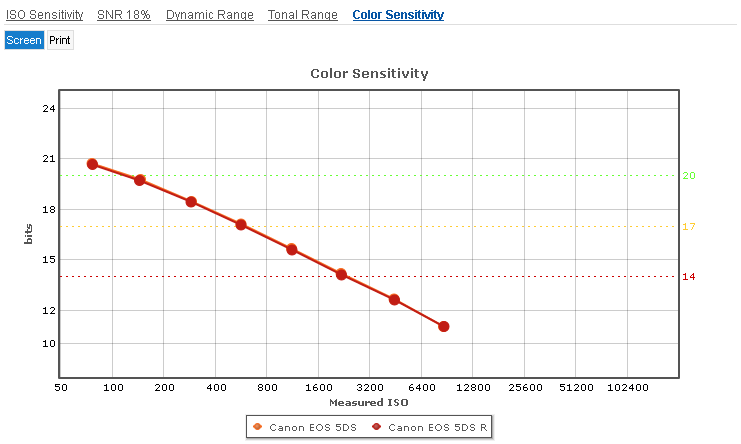
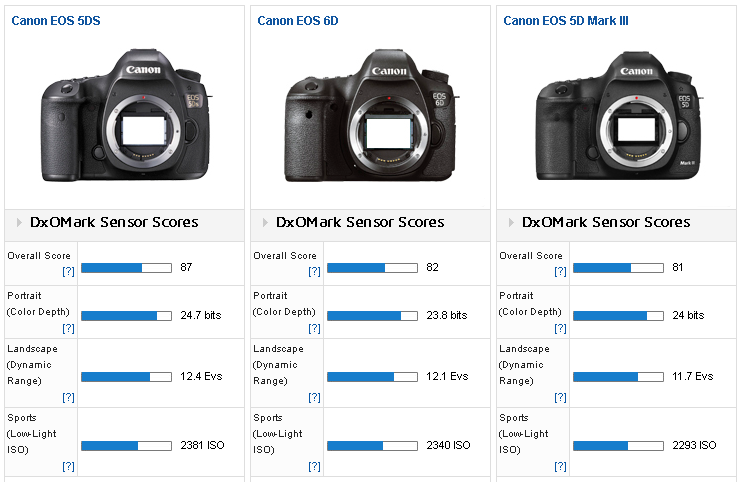
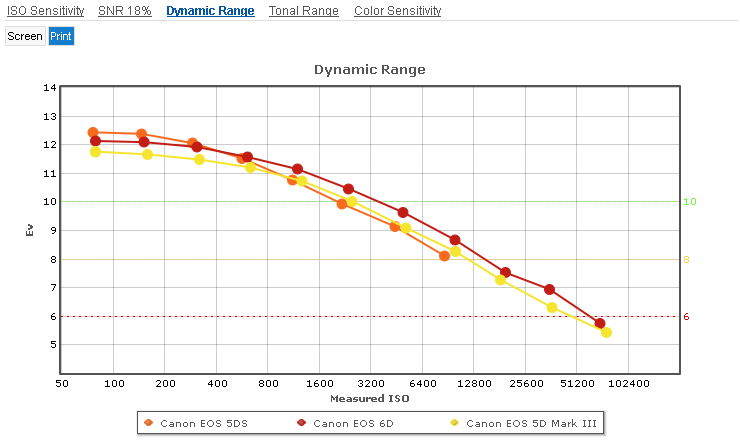
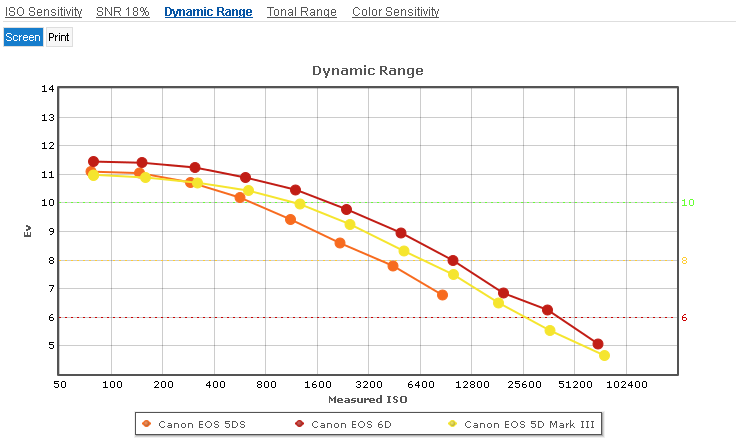
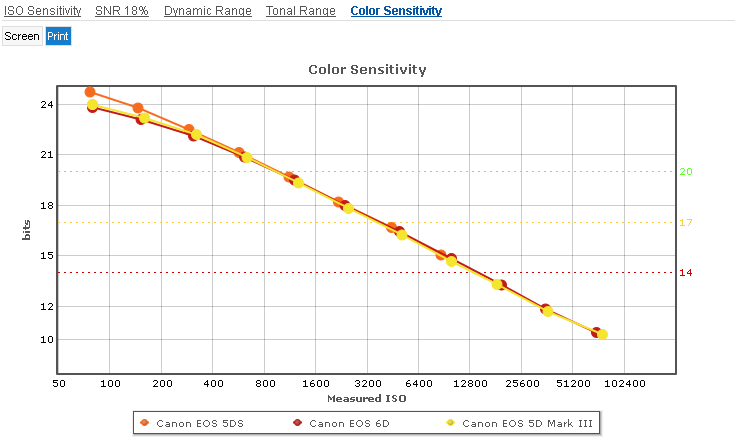
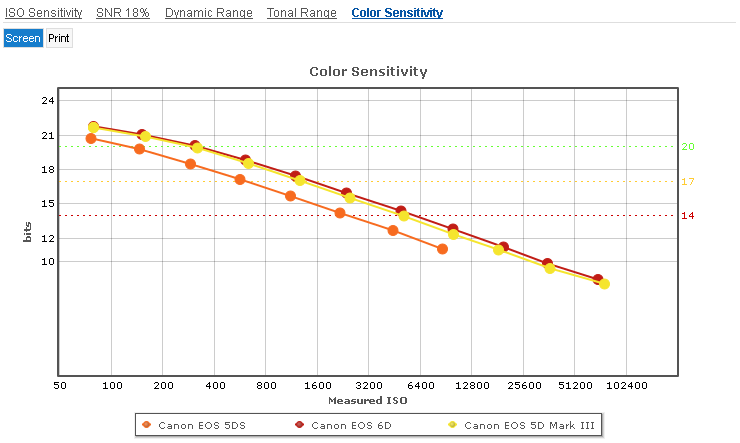
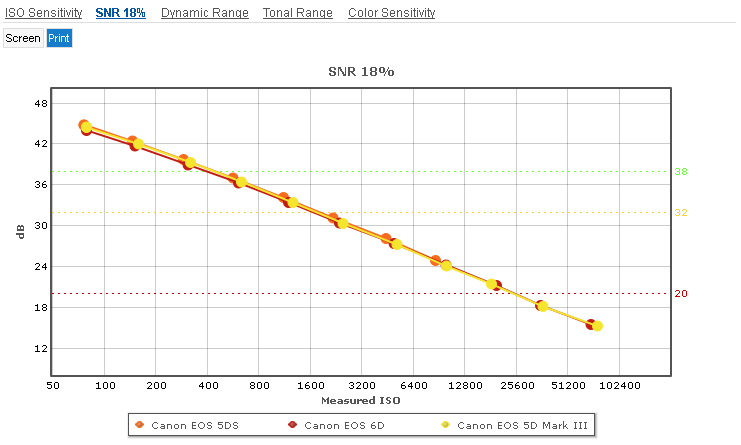
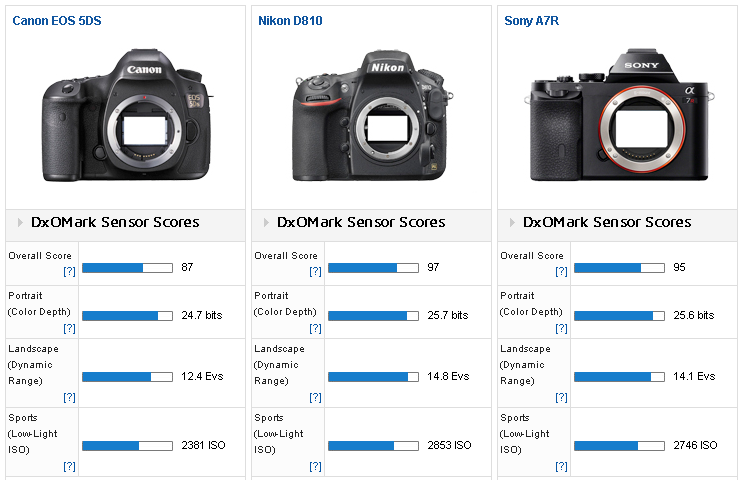
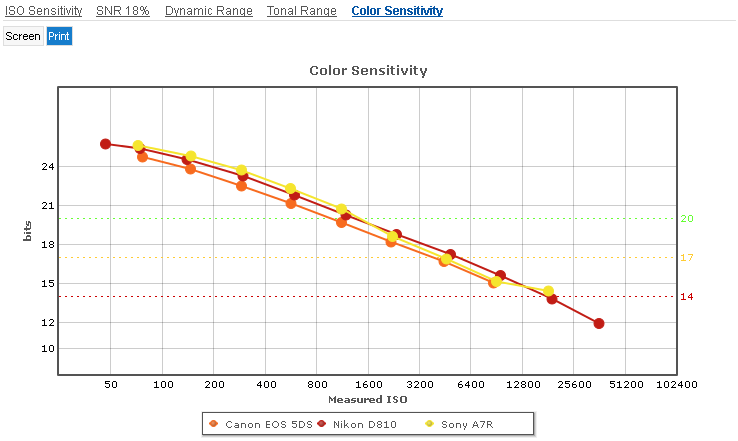
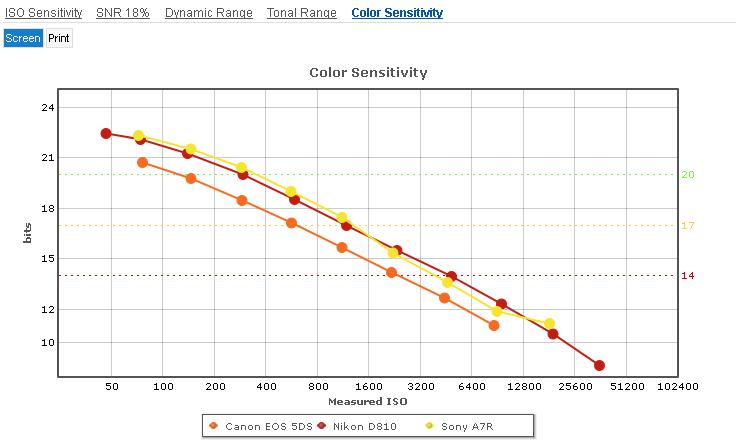
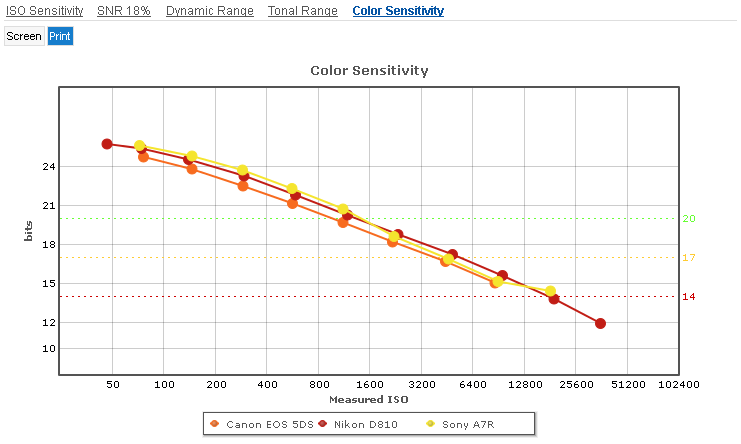
DXOMARK encourages its readers to share comments on the articles. To read or post comments, Disqus cookies are required. Change your Cookies Preferences and read more about our Comment Policy.